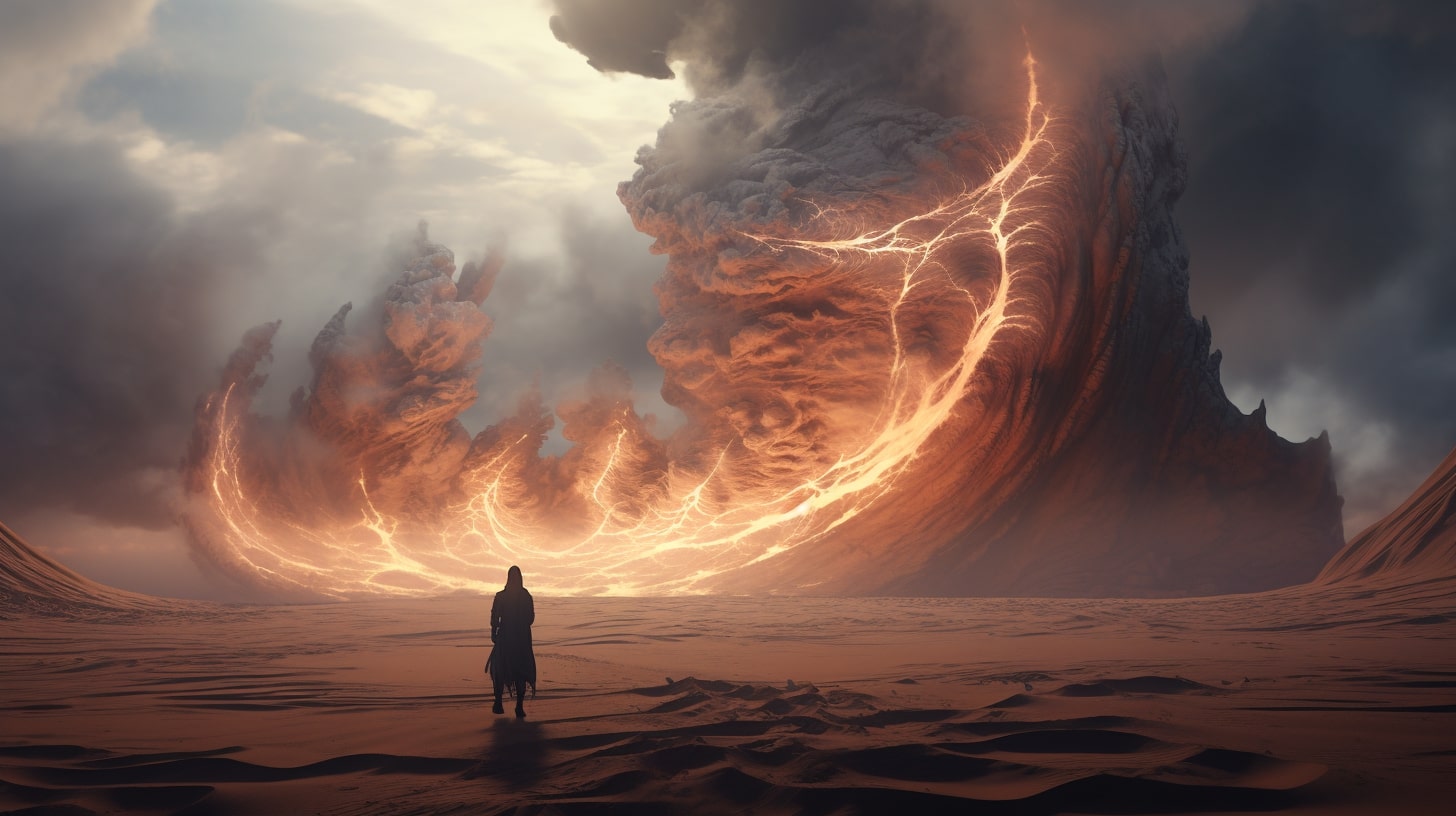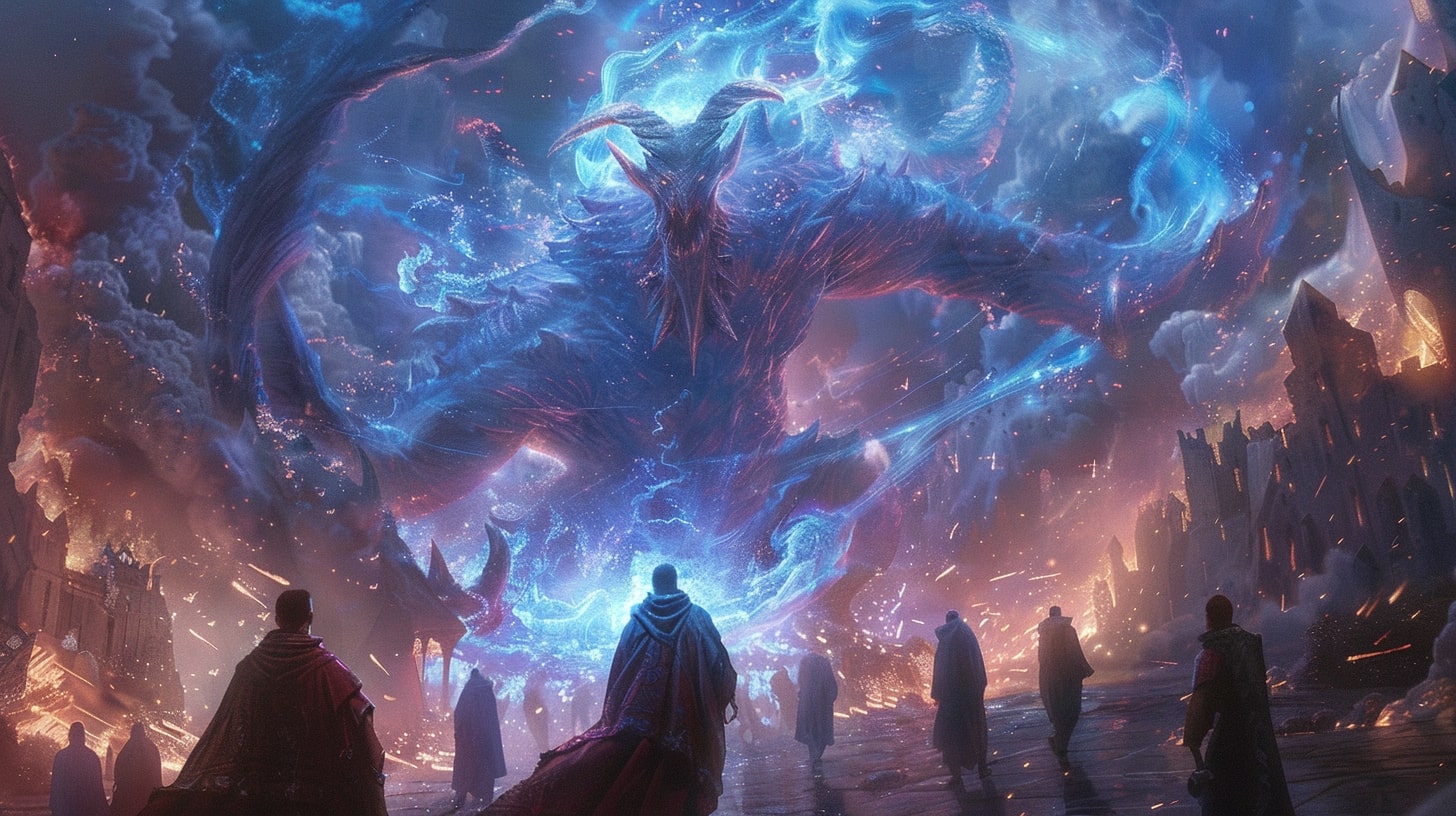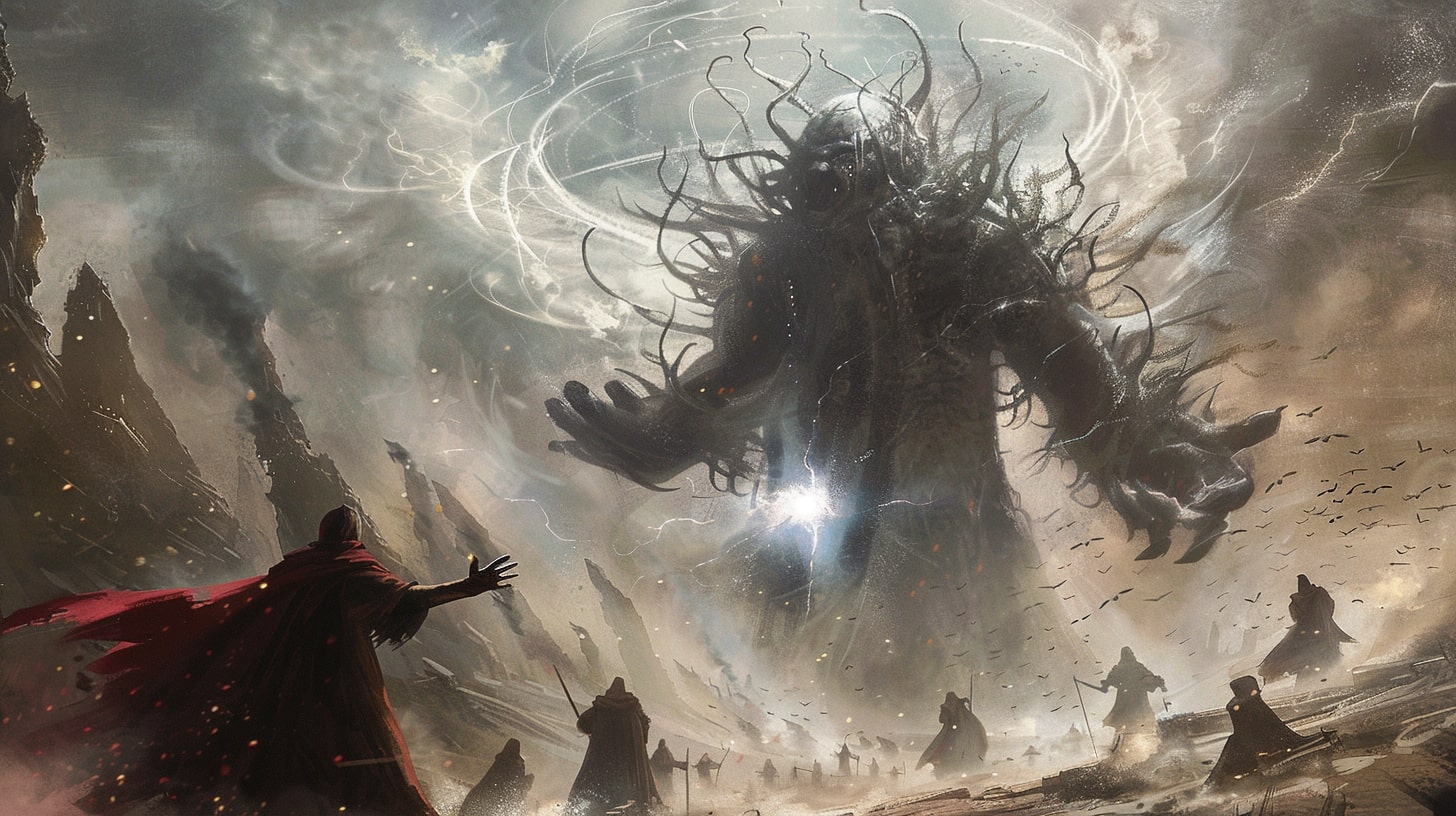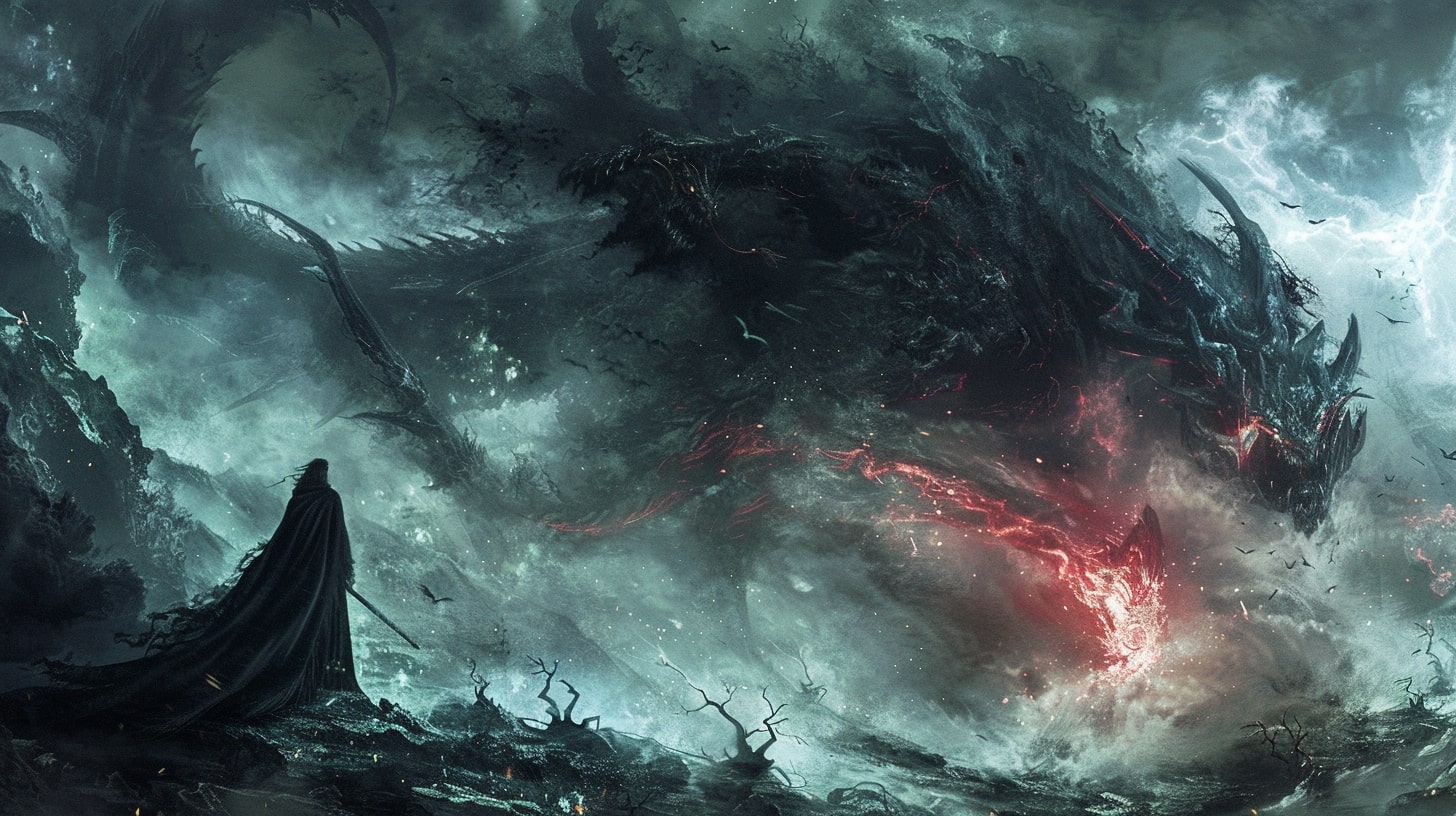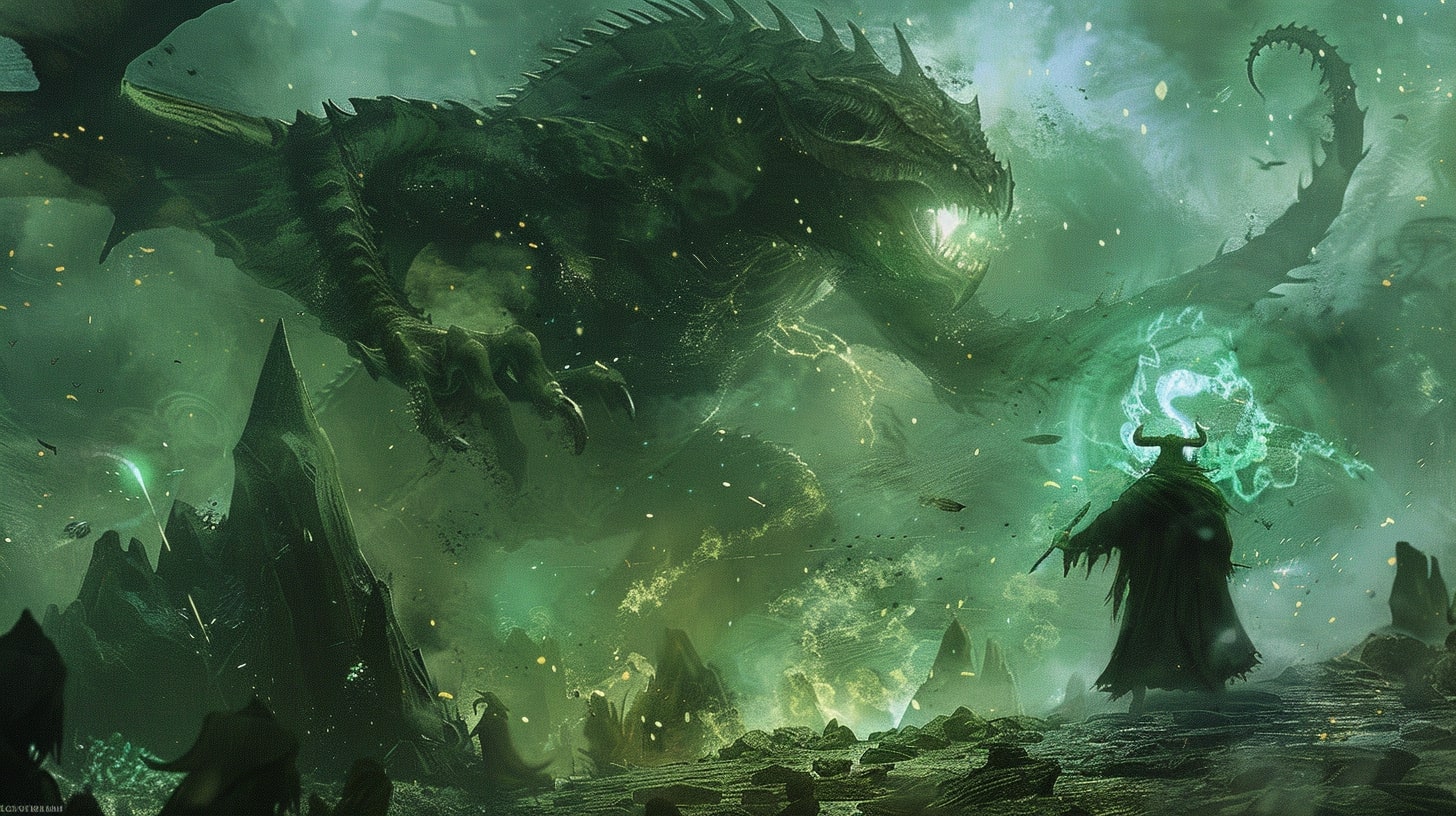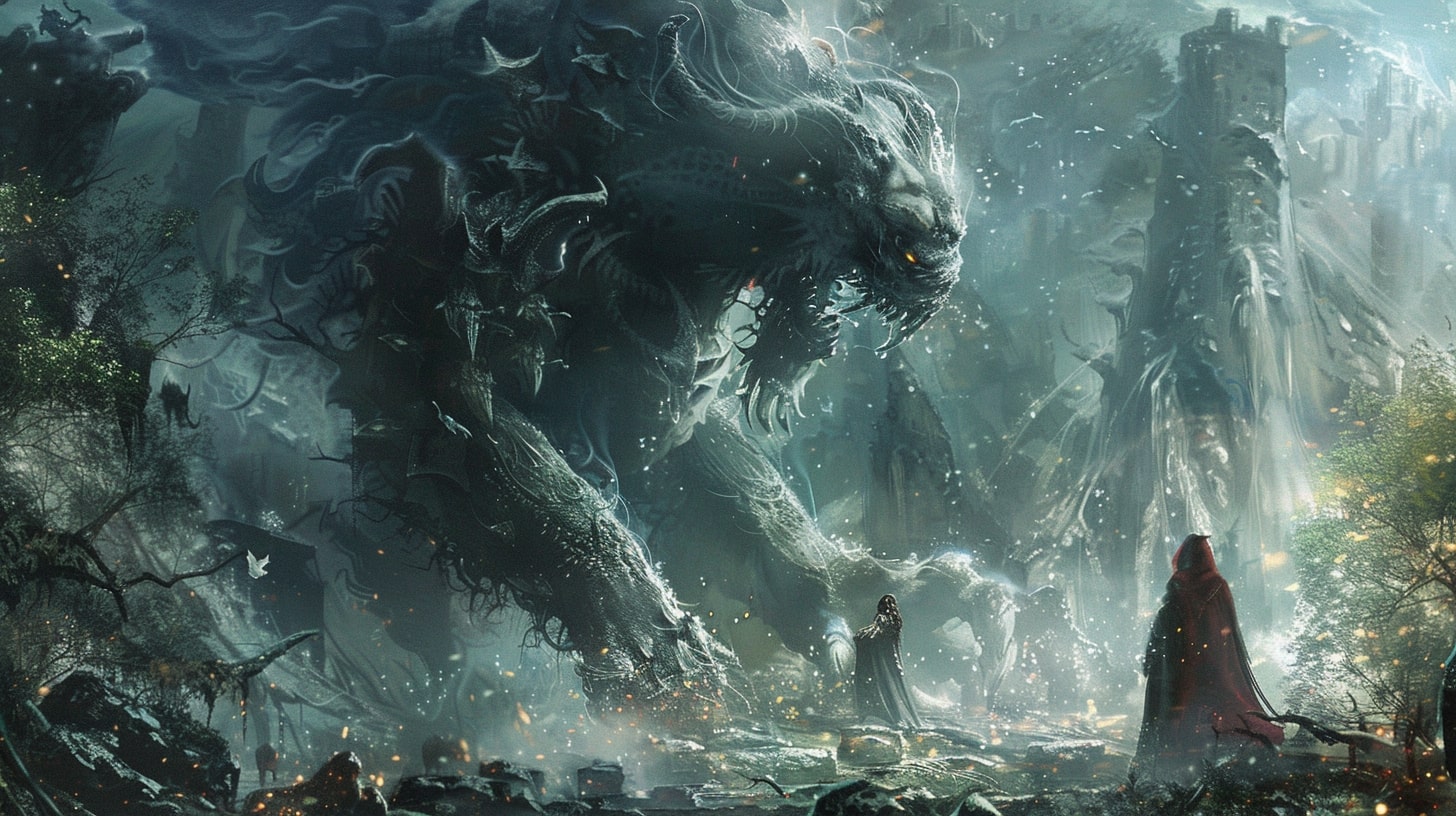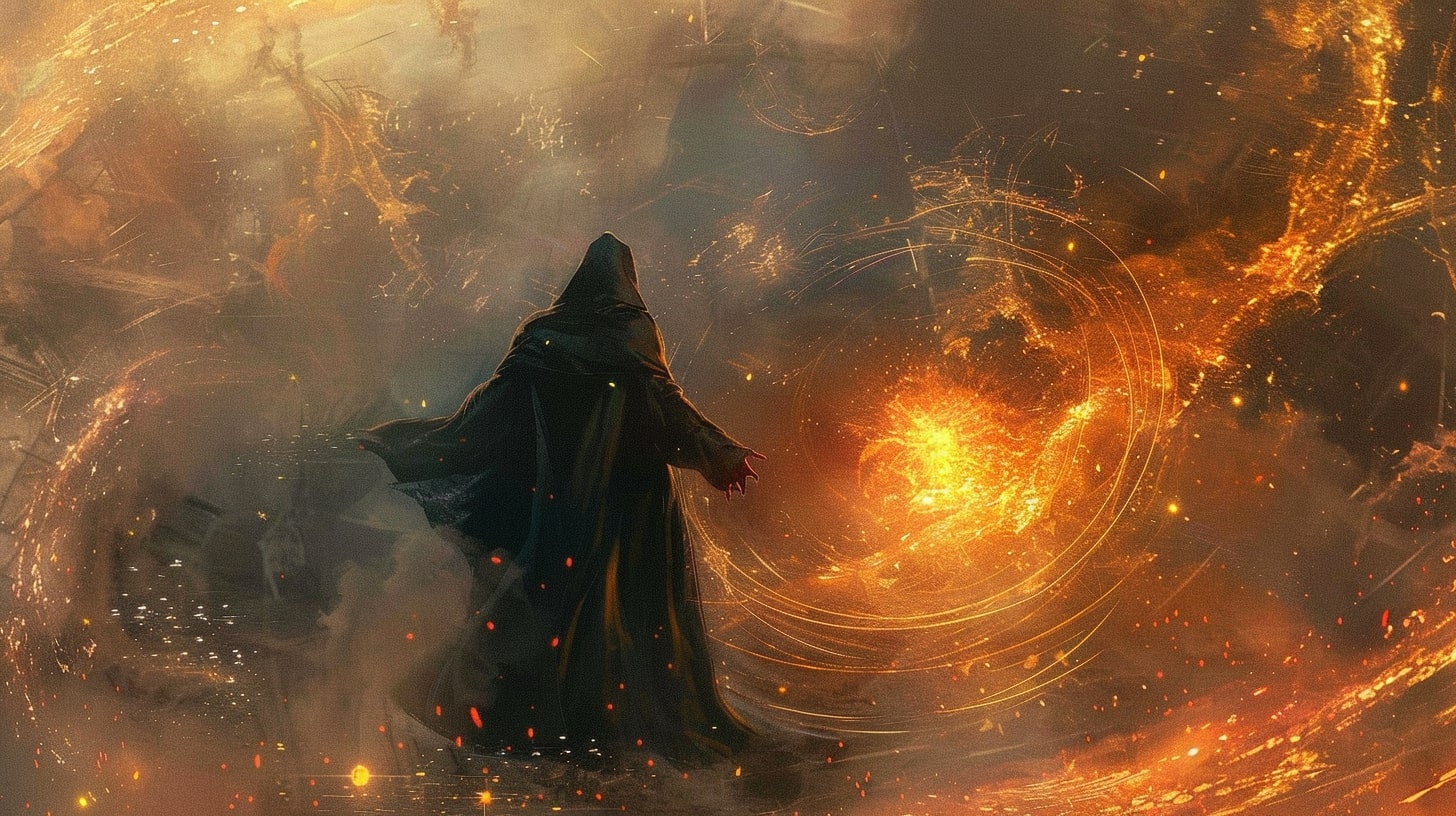In the realm of fantasy worlds, magic plays a significant role in shaping the narrative and adding a sense of wonder and awe.
One particular branch of magic that captivates both readers and writers alike is elemental magic. This form of magic draws its power from the natural elements, allowing practitioners to command and manipulate the forces of earth, air, fire, and water.
Let’s explore the beauty of elemental magic systems and how they can enhance the worlds that you create.

Exploring Elemental Magic
Magic serves as the catalyst for extraordinary events and abilities in fantasy worlds. It introduces a touch of the supernatural, enabling characters to perform fantastical feats beyond the limits of ordinary existence. From casting spells to summoning mystical creatures, magic enhances the storytelling experience and sparks the imagination of both readers and writers.
As a fantasy writer, you have the power to shape and define the magic system in your world. The rules, limitations, and intricacies of your magic system will create a unique foundation that sets your story apart. If you’re seeking inspiration for your magic system, visit our article on magic system ideas to explore different concepts and possibilities.
For now, let’s hop into how to create amazing elemental magic spells.

Introduction to Elemental Magic
Elemental magic is a powerful and captivating form of magic that involves the manipulation of the fundamental elements of nature. Each element possesses distinct characteristics and abilities, offering a wide range of possibilities for spellcasting and storytelling.
Let’s take a brief look at the four primary elements of elemental magic:
Earth
Representing stability, growth, and solidity, earth magic allows spellweavers to control the very ground beneath their feet. Earth magic users can shape the terrain, manipulate rocks and minerals, and even summon creatures of the earth. From creating protective barriers to causing seismic disturbances, earth magic provides a foundation of strength and endurance.
Air
Air magic harnesses the power of wind and atmosphere. Those skilled in air magic can manipulate air currents, create gusts and whirlwinds, and even achieve the ability to fly. Air magic grants spellcasters agility, speed, and the ability to control the very breath of life.
Fire
Fire magic embodies both destruction and transformation. Fire magic users can conjure flames, control heat, and manipulate fire to suit their needs. From launching fireballs to creating walls of flames, fire magic infuses spells with intensity and passion.
Water
Water magic draws power from the fluidity and adaptability of water. Those who command water magic can manipulate water bodies, create and control ice, and even summon torrential storms. Water magic provides a sense of fluidity and versatility, allowing spellweavers to adapt to various situations.

As you delve deeper into the art of elemental magic, you will discover the intricacies and complexities associated with each element. By incorporating elemental magic into your writing, you can weave a rich tapestry of imagination and bring your fantasy world to life.
In the following sections, we will explore the mechanics, spells, and techniques involved in harnessing the power of each element. Get ready to dive into the world of elemental magic and become a skilled spellweaver!
Understanding the Elements
To delve into the art of elemental magic, it is essential to have a solid understanding of the four primary elements: Earth, Air, Fire, and Water. These elements serve as the foundation for many magical systems and offer a rich source of inspiration for fantasy writers like yourself.
Earth
The element of Earth embodies stability, strength, and grounding. It represents the solid and tangible aspects of the natural world. Earth magic is often associated with abilities such as manipulating soil, rocks, and plants, as well as sensing and communing with the earth’s energy like in Myth Dawn.
Incorporating Earth magic into your writing can add a sense of rootedness and connection to the physical world. Consider the various ways in which characters with Earth magic can interact with their environment, from shaping the land to nurturing plant life. To further explore the possibilities of Earth magic, check out our article on magic system elements.

Air
The element of Air embodies freedom, movement, and intellect. It represents the intangible and ethereal aspects of the world. Air magic often involves manipulating wind, creating gusts or breezes, and enhancing one’s agility and mental acuity.
In your writing, incorporating Air magic can introduce a sense of lightness and fluidity. Characters with Air magic can soar through the skies, manipulate airflow, and communicate with birds or other creatures of the air. Consider the ways in which Air magic can be used for both offense and defense, as well as for gathering information or traveling swiftly. For further inspiration, explore our article on magic system integration.
Fire
The element of Fire embodies passion, transformation, and energy. It represents the power and intensity of heat and flames. Fire magic often involves creating and controlling fire, harnessing its destructive or purifying properties, and manipulating heat and light.
Integrating Fire magic into your writing can bring about a sense of intensity and raw power. Characters with Fire magic can ignite objects, generate powerful blasts of flame, or wield fire as a weapon. Additionally, Fire magic can be associated with healing or purification through cauterization or the manipulation of energy. Explore our article on magic system mechanics for more insights into fire-based magical abilities.

Water
The element of Water embodies adaptability, fluidity, and emotion. It represents the ever-changing and flowing aspects of existence. Water magic often involves manipulating water in its various forms, controlling tides and currents, and even influencing emotions or healing.
In your writing, incorporating Water magic can bring about a sense of fluidity and emotional depth. Characters with Water magic can summon water, create or manipulate bodies of water, and even communicate with aquatic creatures. Additionally, Water magic can be used for healing or divination, as the element is closely linked to intuition and the subconscious mind. For further inspiration, explore our article on magic system research.
By understanding the essence of these elemental forces, you can weave intricate and captivating tales of elemental magic. Remember to consider the strengths and limitations of each element, as well as the unique ways in which characters can interact with and draw power from them. Embrace the magic within and let your imagination soar as you explore the depths of elemental magic in your writing.

Harnessing Elemental Magic Spells
To become a skilled spellweaver and master the art of elemental magic, it’s essential to understand the spellcasting basics and learn how to align with the elements. These fundamental aspects will lay the foundation for your magical abilities and allow you to harness the power of the elements effectively.
Spellcasting Basics
Before delving into the intricacies of elemental magic, it’s important to grasp the spellcasting basics. Spellcasting involves channeling your mana or magical energy to create specific effects through incantations, gestures, or a combination of both. The key components of spellcasting include:
- Intent: Clearly define the purpose and desired outcome of your spell. Focus your thoughts and emotions on the intended result to manifest your magical energy effectively.
- Visualization: Visualize the desired outcome of your spell in vivid detail. Imagine how it would look, feel, and sound. This mental imagery helps to strengthen your connection with the magical energy and enhances the effectiveness of your spell.
- Verbalization: Utter the incantations or spells that correspond to the desired effect. The words you choose should resonate with the elemental forces you wish to manipulate, amplifying the power of your magic.
- Gestures: Incorporate specific hand movements or gestures that symbolize the elements you are working with. These gestures serve as a physical conduit, allowing you to channel your magical energy with precision.
- Focus: Maintain unwavering focus throughout the spellcasting process. Avoid distractions and stay fully present in the moment. This heightened focus enhances the flow of magical energy and increases the potency of your spells.
Remember, practice is key when it comes to spellcasting. Regularly hone your skills, experiment with different techniques, and refine your understanding of the elements to become a proficient spellweaver.

Aligning with the Elements
Elemental magic revolves around the manipulation of earth, air, fire, and water. To effectively harness the power of these elements, it’s crucial to align yourself with their unique qualities and energies.
Earth: The element of earth represents stability, grounding, and strength. To align with the earth element, connect with the natural world, spend time in nature, and cultivate a sense of stability and perseverance in your life.
Air: Air is associated with intellect, communication, and freedom. To align with the air element, focus on clarity of thought, practice deep breathing exercises, and embrace open-mindedness and adaptability.
Fire: Fire embodies passion, transformation, and creativity. To align with the fire element, ignite your inner passion, embrace your creativity, and cultivate a sense of courage and determination.
Water: The element of water symbolizes emotions, intuition, and adaptability. To align with the water element, explore your emotions, embrace your intuition, and flow with the changes and challenges life presents.
By aligning yourself with the elements, you establish a harmonious connection that enhances your ability to manipulate and wield their energies. This alignment will allow you to tap into the immense power of elemental magic and become a true spellweaver.
In the next section, we will explore the different elemental magic spells associated with each element, providing you with a deeper understanding of their unique characteristics and applications.

Elemental Magic Spells
As a fantasy writer, elemental magic spells can add depth and excitement to your magical world. By harnessing the power of the elements, your characters can create awe-inspiring and captivating spells. In this section, we will explore different elemental magic spells categorized by their associated elements: earth, air, fire, and water.
Earth Spells
Earth spells tap into the power of the earth element, allowing characters to manipulate the ground, rocks, and plant life. These spells can range from creating barriers and shields using earthen materials to causing earthquakes and controlling plant growth. Here are a few examples of earth spells:
| Spell | Description |
|---|---|
| Stone Skin | Temporarily transform your skin into solid stone, providing enhanced protection from physical attacks. |
| Tremor Strike | Send powerful shockwaves through the ground, causing the earth to shake and disrupting your opponents’ stability. |
| Nature’s Grasp | Manipulate vines and roots to ensnare and immobilize your enemies, restricting their movement. |
Air Spells
Air spells harness the power of the air element, allowing characters to control wind currents, create gusts, and manipulate the atmosphere. These spells can be used for transportation, defense, or even offensive purposes. Here are a few examples of air spells:
| Spell | Description |
|---|---|
| Galeforce | Summon a powerful gust of wind to knock back foes or create a barrier against projectiles. |
| Flight | Manipulate the air currents around you to grant the ability to fly, soaring through the sky with grace and speed. |
| Whirlwind Assault | Create a swirling vortex of wind around your weapon, increasing its speed and the force of your strikes. |
Fire Spells
Fire spells tap into the fiery energy of the element, allowing characters to conjure flames, control heat, and unleash destructive infernos. These spells can be used for offense, illumination, or as a means of intimidation. Here are a few examples of fire spells:
| Spell | Description |
|---|---|
| Fireball | Create a ball of intense flames and hurl it at your enemies, causing a fiery explosion upon impact. |
| Inferno Burst | Unleash a wave of intense heat, scorching everything in its path and leaving a trail of devastation. |
| Flame Shield | Surround yourself with a protective shield of flames, warding off incoming attacks and burning those who come too close. |
Water Spells
Water spells draw power from the element of water, allowing characters to manipulate water bodies, create tidal waves, and control the flow of moisture. These spells can be used for healing, defense, or even drowning enemies. Here are a few examples of water spells:
| Spell | Description |
|---|---|
| Healing Waters | Channel the rejuvenating properties of water to heal wounds and restore vitality to yourself or others. |
| Torrential Wave | Summon a massive wave of water, crashing down upon your foes and sweeping them away in its powerful current. |
| Aquatic Form | Transform into water, allowing you to effortlessly flow through tight spaces or evade attacks with fluid grace. |
By incorporating these elemental magic spells into your writing, you can create a vibrant and immersive magical system. Remember to consider the limitations, costs, and consequences of using magic to maintain balance and add depth to your world. For more ideas and inspiration on magic systems, check out our article on magic system ideas. Let your imagination soar as you weave captivating tales of elemental magic!

Developing Your Spellcasting Abilities
To become a proficient spellcaster in the art of elemental magic, you must dedicate time and effort to develop your abilities. This section will guide you through the essential steps to enhance your spellcasting skills. It covers training and practice, deepening your connection to the elements, and ethical considerations.
Training and Practice
Like any skill, mastering elemental magic requires consistent training and practice. Begin by familiarizing yourself with the foundational knowledge and techniques of spellcasting. Study the theories and principles behind elemental magic, such as the interactions and relationships between different elements. This knowledge will provide a solid foundation for your spellcasting journey.
Practice your spells regularly to refine your techniques and improve your control over the elements. Start with simple spells and gradually work your way up to more complex ones. Repetition and perseverance are key to honing your skills as a spellweaver. Consider joining a magical academy or seeking guidance from experienced mentors to receive structured training and valuable feedback.

Deepening Your Connection to the Elements
A strong connection to the elements is essential for effective spellcasting. Spend time immersing yourself in nature and observing the elements in their purest form. Whether it’s feeling the earth beneath your feet, gazing at the undulating waves of water, or breathing in the gentle caress of the wind, these experiences will deepen your connection to the elements and enhance your magical abilities.
Engage in elemental rituals and meditations to further strengthen your bond. Devote time to each element individually, focusing on its unique qualities and energies. This practice will allow you to attune yourself to the elemental forces and draw upon their power with greater ease.
Remember to respect and honor the elements during your journey. Recognize that they are not merely tools for your spells, but living entities deserving of reverence. Treat them with care and gratitude, and they will respond by guiding and empowering your spellcasting endeavors.

Ethical Considerations
As a spellweaver, it is crucial to uphold ethical standards in your practice of elemental magic. The power you wield can have far-reaching consequences, and it is your responsibility to ensure that your spells are used for the greater good.
Consider the potential impact of your spells on the environment, society, and individuals. Strive to align your magical endeavors with principles of harmony, balance, and respect. Avoid using your abilities to cause harm, manipulate others, or disrupt the natural order.
Take the time to reflect on the ethical implications of each spell you cast. Consider the intentions behind your actions and the potential consequences they may have. Embrace a code of conduct that promotes empathy, compassion, and the preservation of natural and magical balance.
By continuously developing your spellcasting abilities, deepening your connection to the elements, and adhering to ethical considerations, you will become a skilled and responsible spellweaver. Embrace the art of elemental magic with reverence and dedication, and let your spells weave harmony and wonder into the world around you.
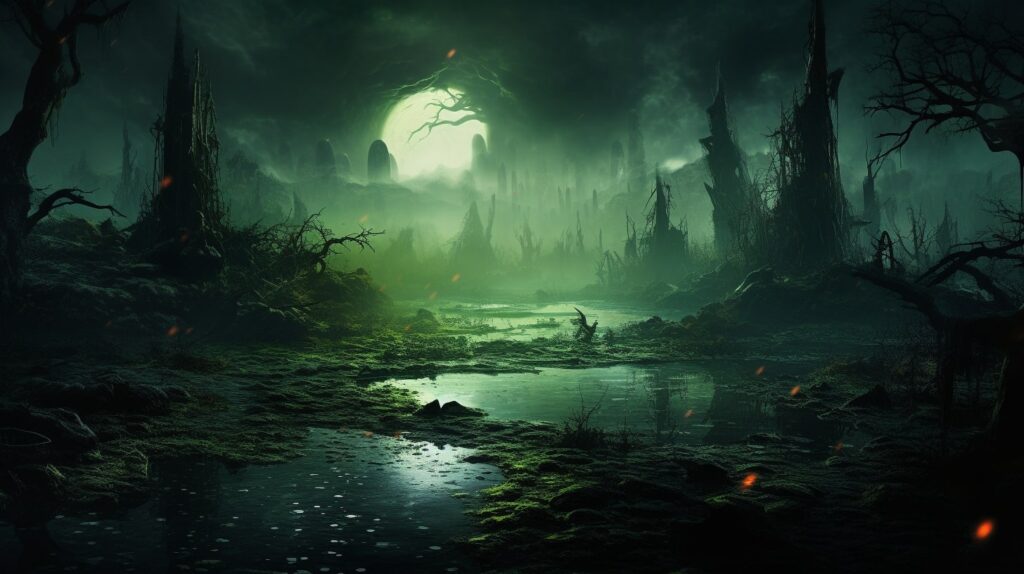
Embrace Your Inner Spellweaver
Now that you have explored the fascinating world of elemental magic, it’s time to embrace your inner spellweaver. By delving into the art of elemental magic, you can unlock a realm of creative possibilities and bring your stories to life.
Embracing the Art of Elemental Magic
To fully embrace the art of elemental magic, immerse yourself in the study and understanding of the elements. Tap into your imagination and envision how each element can be harnessed and manipulated through magic. Consider the unique qualities and characteristics of each element: the solidity of earth, the fluidity of water, the dynamic nature of fire, and the ethereal quality of air.
As you develop your magical system, remember that consistency and logic are key. Establish clear rules and limitations for your magic system to maintain balance and believability. Take inspiration from different types of magic systems, such as arcane magic systems, divine magic systems, and nature-based magic systems. By blending these concepts with elemental magic, you can create a truly unique and captivating magical system.
Incorporate the elements seamlessly into your worldbuilding process. Think about how the presence of elemental magic shapes societies, cultures, and conflicts in your fictional world. Consider the intricate relationships between different magic systems, such as ritualistic magic systems or blood magic systems, and how they interact with elemental magic. This integration adds depth and richness to your world, making it feel more authentic and immersive.

Incorporating Elemental Magic into Your Writing
As a fantasy writer, you have the power to weave elemental magic into the fabric of your stories. When incorporating elemental magic, consider the following:
- Character Creation: Craft unique and diverse characters who possess the ability to wield elemental magic. Explore their connection to the elements, their strengths, and their weaknesses. Use the elements as a reflection of their personalities and as a tool to drive their character arcs.
- Plot Development: Utilize elemental magic as a driving force behind your story’s conflicts and resolutions. Create epic battles where characters unleash the power of the elements, or weave subtle instances of elemental magic into the narrative to add intrigue and mystery.
- Descriptive Language: Infuse your writing with vivid descriptions of elemental magic. Paint a picture with your words, capturing the crackling flames of fire spells, the rush of wind in air spells, the gentle caress of water spells, and the solid strength of earth spells. Engage your readers’ senses and transport them into the world of your story.
Remember, the magic is in your hands. Embrace the art of elemental magic and let your imagination soar. By incorporating elemental magic into your writing, you can create captivating worlds, compelling characters, and unforgettable stories.
